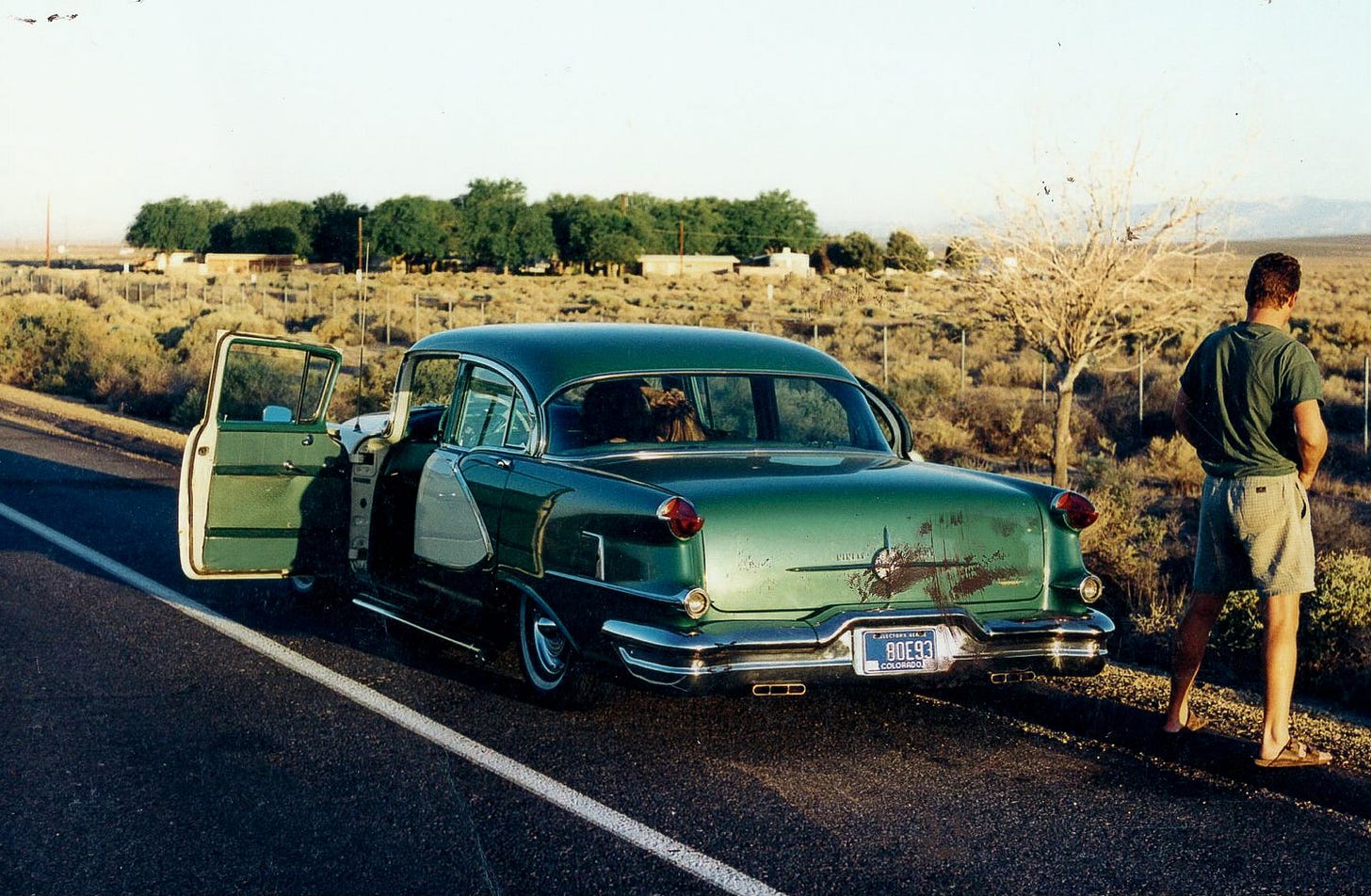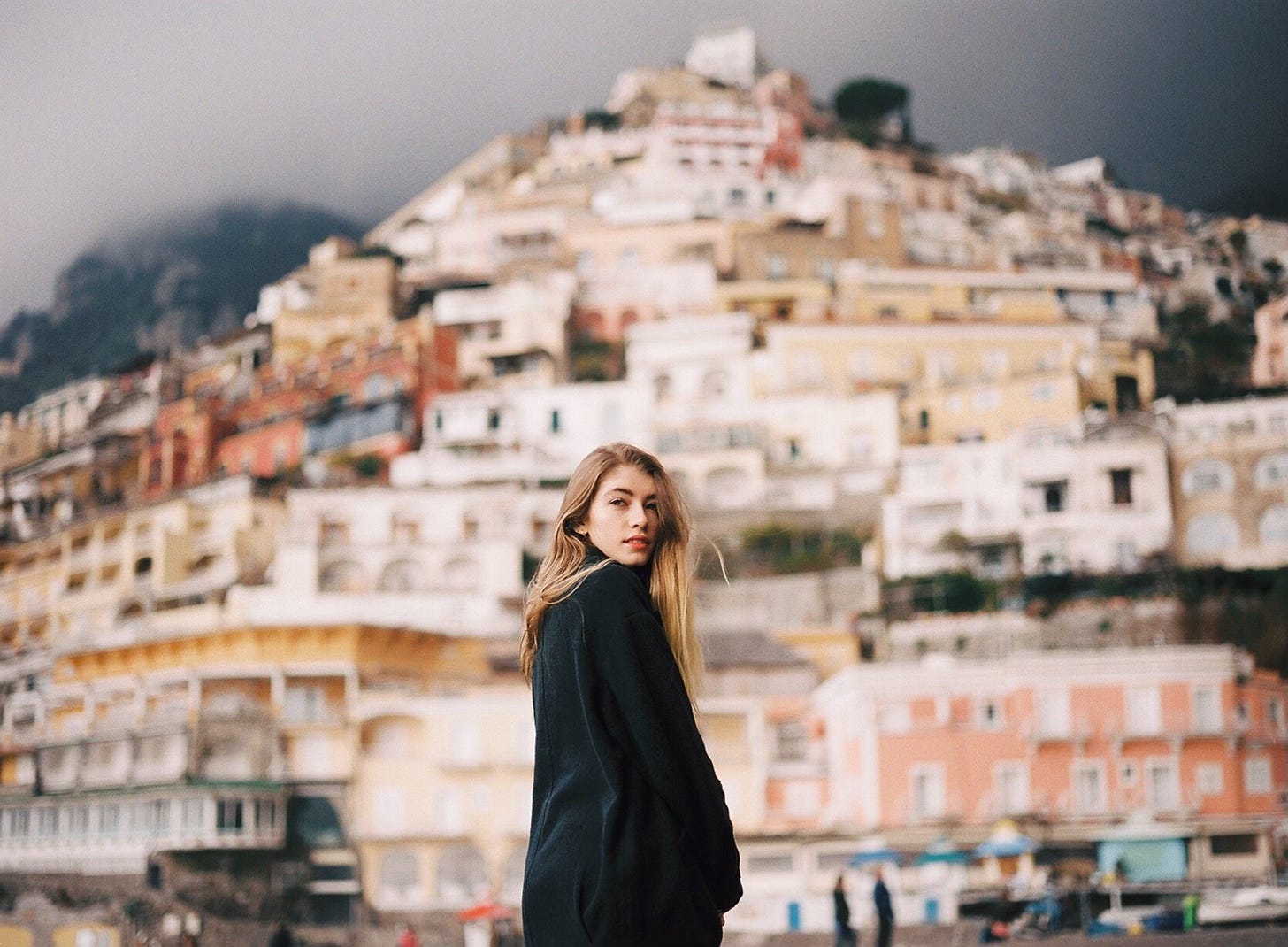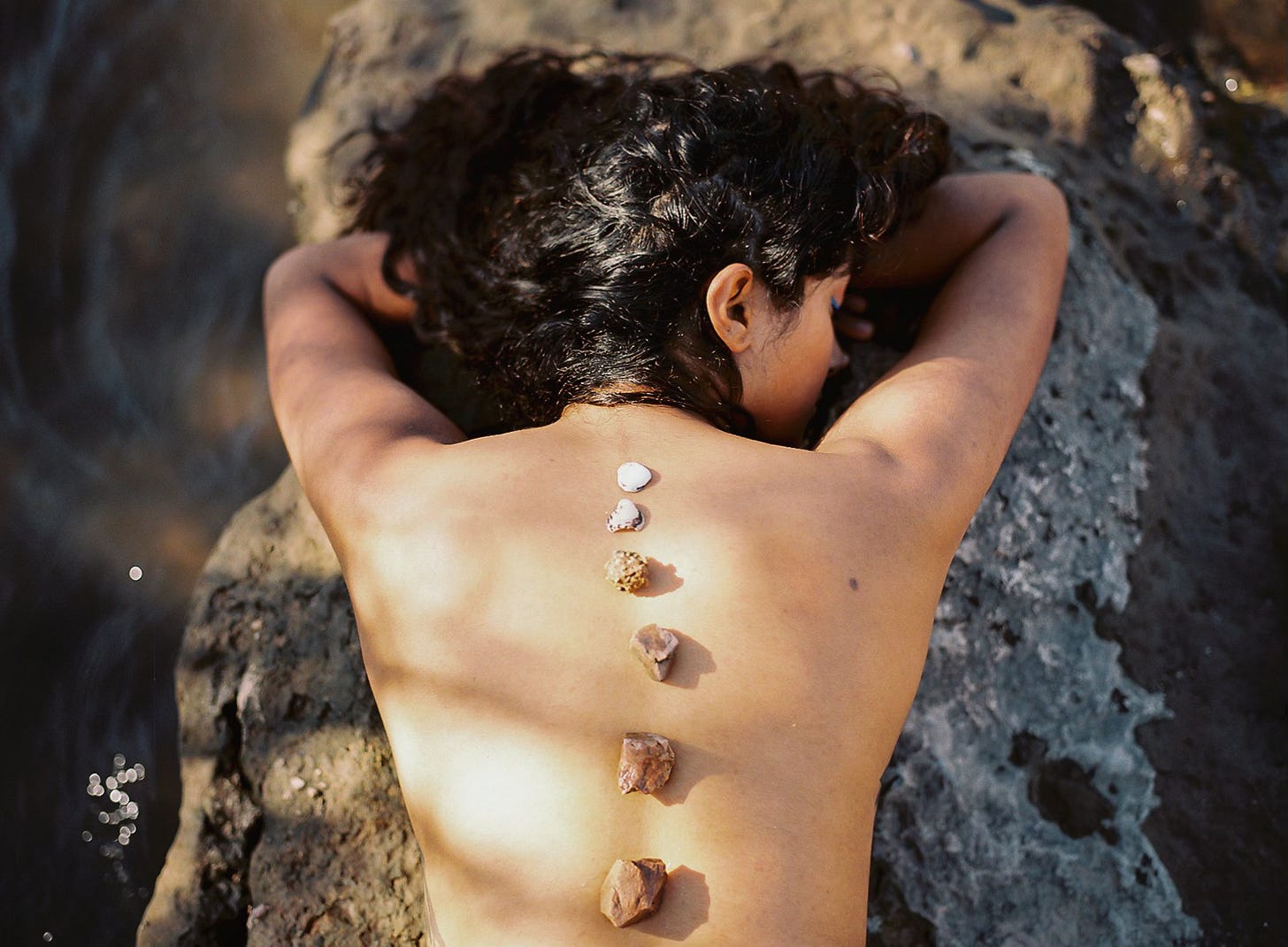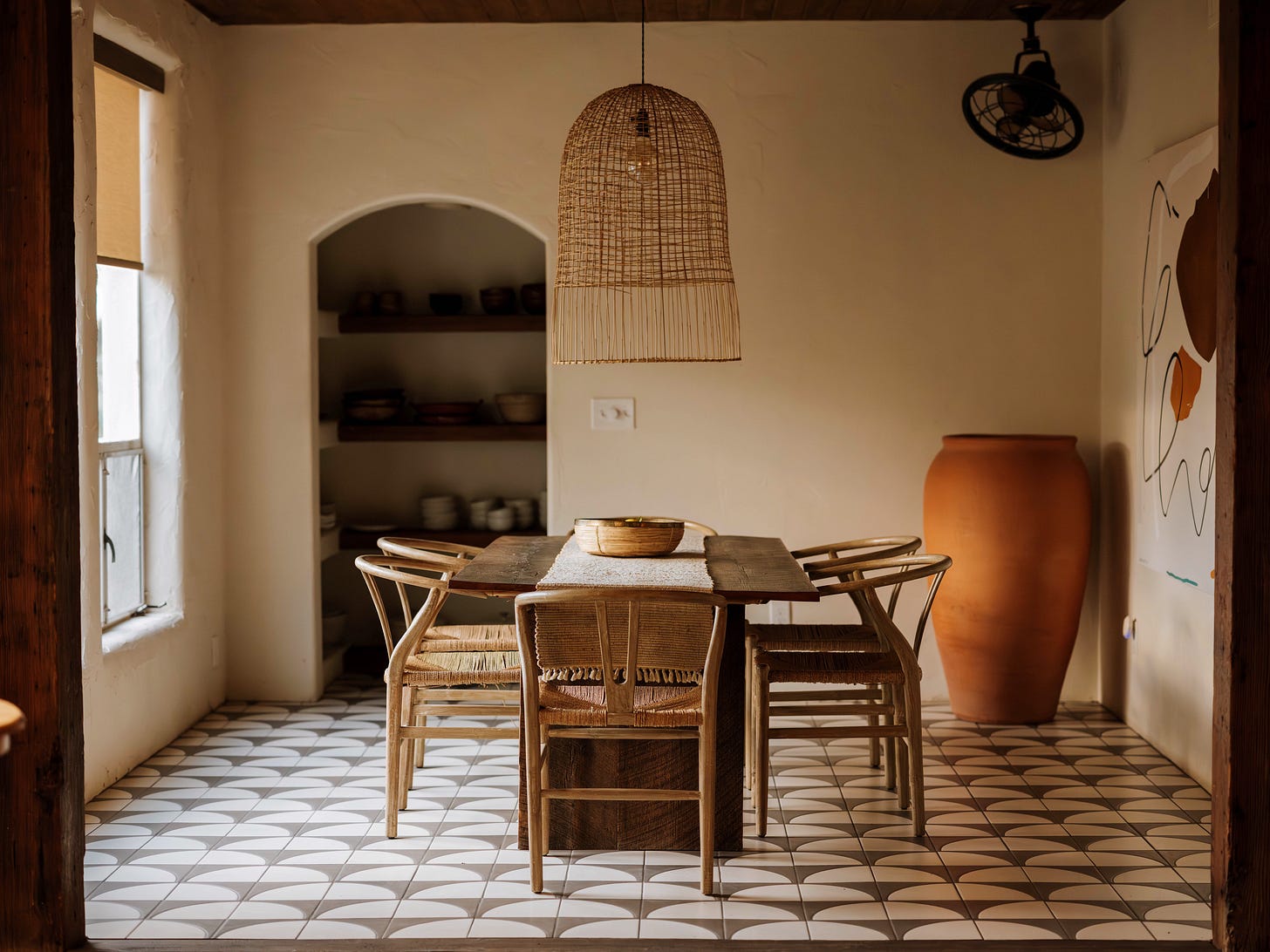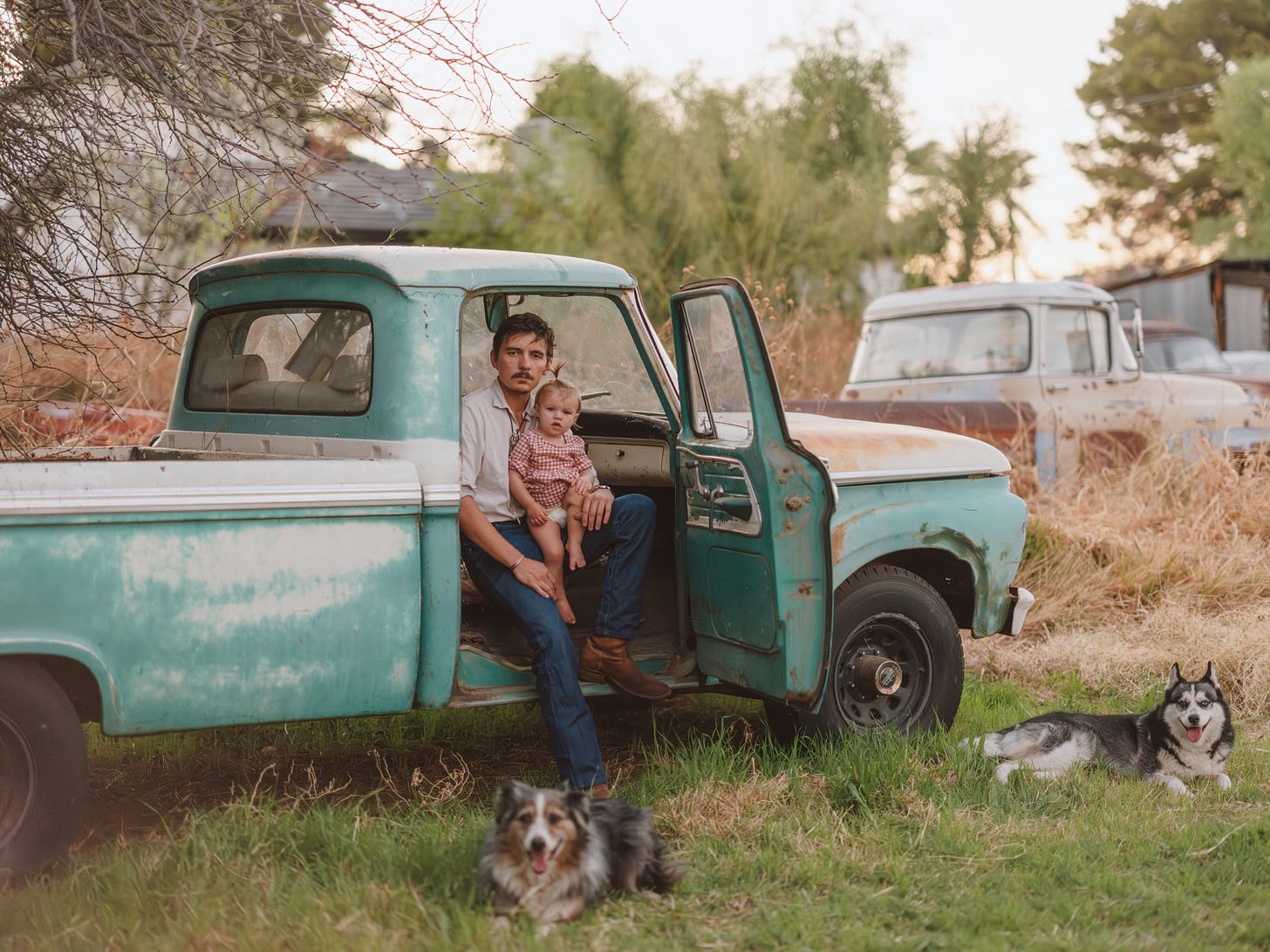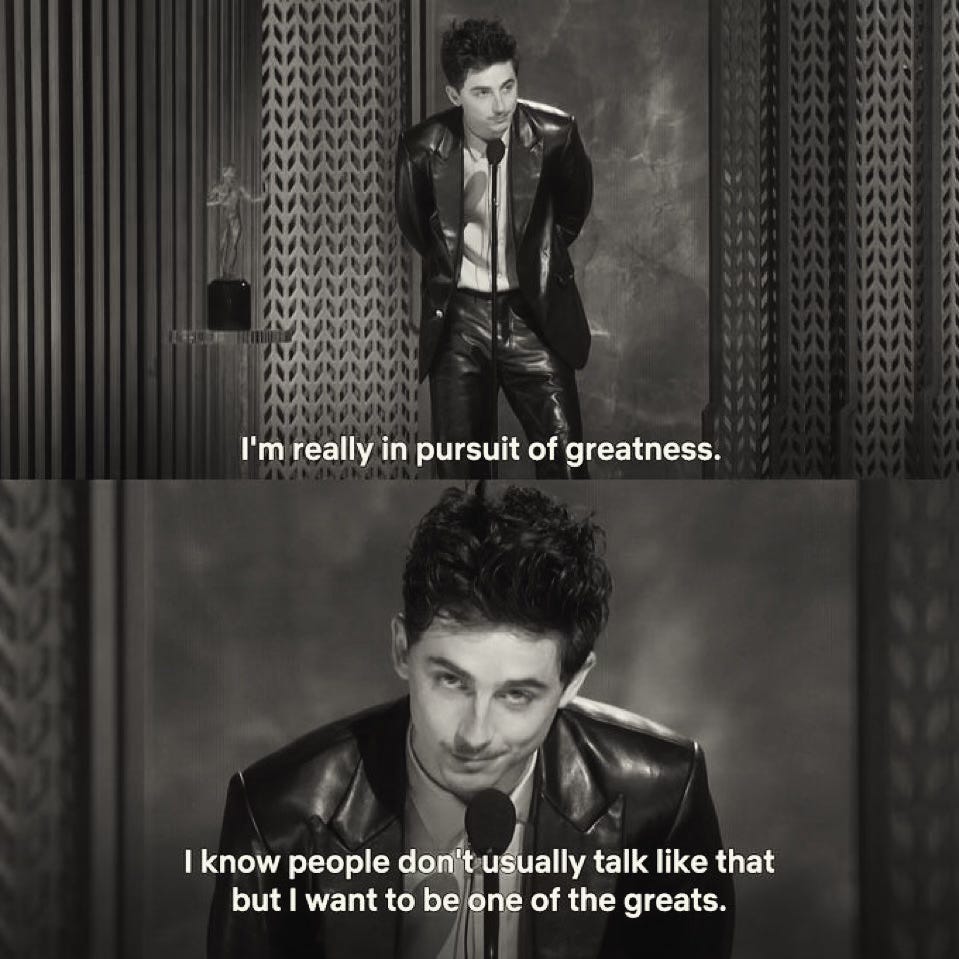Where I Stand With Film Photography Right Now
Lessons from a dusty shoebox, a decade of work, and a fresh start.
In 2017, I stumbled upon a dusty shoebox filled with my dad’s photographs from the ’70s and ’80s. Inside were images of crusty trailblazers hiking the backwoods of Colorado, flashy party scenes with beer-stained shag carpet, and vintage cars at dirtbag shows around the country. It hit me like a wave of creative inspiration, and also a sudden realization that my dad was actually pretty cool.
Back then, I was already taking plenty of pictures of my own life, though my subjects were different; I didn’t drink or smoke the way he did in his heyday. But something kept nagging at me: why didn’t my photos look like his? His prints were gritty yet clear, dreamy yet real. Meanwhile, my shots never quite sparked that same raw feeling I was chasing. I was young and hungry, wondering if my kids would ever flip through my albums with the same wide-eyed novelty I felt looking at his.
At the start of my photography career, I had a Canon 5D Mark IV. It was the emblem of my hard work paid for with tip money from second-shooting weddings and waitressing at Postino. Paired with a 35mm f/1.4 lens, it was the digital setup of the time. I took that rig everywhere, from Japan and India to the deserts of Africa and the beaches of France.
But there was something about my dad’s offhand snaps that felt more alive than the images I was making in the here and now. The reason was obvious: film. He shot with a simple Nikon point-and-shoot on classic Kodak stock; settings were never his focus, just the moment itself. How it felt. Suddenly, it clicked for me: analog photography — with its intentionality, process, and effortless design — was the missing piece.
Within a month of finding that shoebox, I ditched my digital camera and committed to analog. When I decide to do something, I’m all in. I stuck with the Canon ecosystem and bought a Rebel 2000 off eBay to still use my EOS lenses. I even wrote an essay about the whole experience for FieldMag, which gained popularity in 2018. I traded high specs for imperfection: soft edges, creamy tones, and that difficult-to-replicate feel.
Since making that switch, my photography transformed.
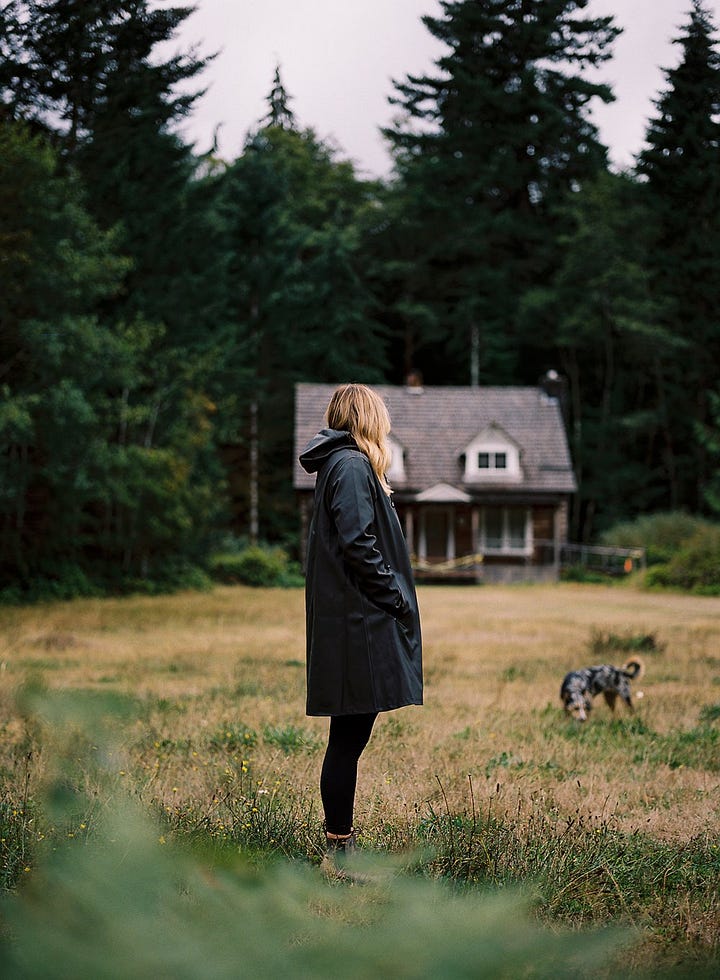


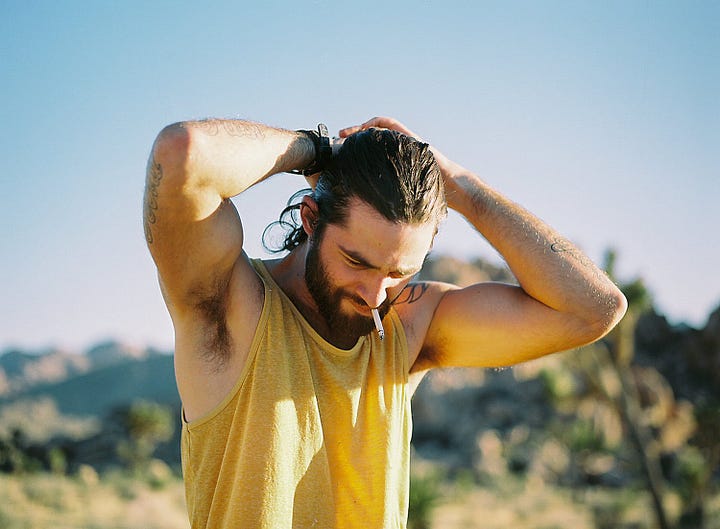
Fast-forward to about a year ago, I had a baby. Naturally, my camera took a backseat with the emotional and physical demands of growing a family. Then, somewhere between milk feeds and bathroom-floor existential moments, I felt this pull to start creating again.
So, I picked the film camera back up.
Thanks to time, experience, and some forced reflection, I took a brutally honest look at my portfolio and asked myself a few hard questions. Something had felt off for a while. It wasn’t that my photos weren’t good or technically on point, I was still landing cool brand gigs and doing fulfilling work at Moment. But on a personal level, something was missing. After ten years of playing behind the lens, I knew I needed honest, critical feedback on my work if I wanted to truly level up.
To figure out what was lacking, I started searching for patterns in my approach to photography. I realized I’d stopped giving myself self-assigned projects, the kind of playful experimentation that used to come so naturally. In the early days of Instagram, when photographers would meet up at the river or roam the neighborhood for Free People-style shoots, that sense of community and creativity was so energizing — organic. But that muscle atrophies quickly if you don’t use it.
I wasn’t shooting just for the fun of it anymore. I was waiting for the universe to hand me a prompt. And I wasn’t telling the stories that mattered most to me. Yes, having a kid changes your priorities, but it dawned on me that I couldn’t keep using “being busy” or “running a business” as an excuse.
The truth is, my work wasn’t getting boring because I didn’t have time to take a good photo. It was getting boring because I stopped caring enough to make an interesting one in the first place.
Film Got Too Easy
Ever since I dug up that old shoebox and rode Kodak’s comeback, I’ve been a film-only shooter for nearly seven years. Portra 400 became my skin-tone cheat code, and the Mamiya 645 and Contax T3 masked any technical slips with their dreamy, foolproof look.
The gear started to define me, and I stopped pushing for stronger images or deeper stories because effects like grain, soft focus, and sloppy framing all felt “artsy,” so I let craft slide.
Now everybody’s shooting film, and I love that. Slowing down, composing carefully, rationing 36 frames. Analog teaches you so much about careful composition and volition. But if you’re a seasoned photographer choosing film mainly because it’s the easiest way to “nail the look” or hide weak shots — take it from me, it’s holding your work back.
Quick point-and-shoot shots make nice keepsakes, but they’re no longer the look I'm chasing as a creator. As my skills grow, so do my standards, yet too often this past year, I grabbed an easy 35mm compact instead of hauling a more serious kit. I lost out on great frames by choosing convenience over creativity. If I’d taken the time to set up a shot with the Fujifilm GFX or even dusted off my 100-year-old Rolleiflex instead of defaulting to the Contax T3, I might’ve walked away with something truly portfolio-worthy.
Then again, maybe not. Who knows. Gear doesn’t matter... until it suddenly does.
This Year, I’m Shooting More Digital
A couple years back, I splurged on a Fujifilm GFX 50S II (couldn’t pass up the sweet Moment employee discount) but I was so deep in my film-only phase that the thing just sat in a drawer gathering dust.
Fast-forward to this year: I felt the itch for “bigger and better,” parked most of my film cameras and dove head-first into medium-format digital. Everything, once again, changed.
Medium format has always been my sweet spot; I was once obsessed with my Mamiya 645 AFD until it died, so returning to those roots only felt right. The GFX’s oversized sensor gives you that dreamy depth with modern sharpness. Settings react differently, focal lengths feel longer, and editing those fat RAW files is pure joy. It’s a pricey buy, but its slow, deliberate feel of the body forces me to shoot with an intention similar to analog.
For months now, it’s been all-digital, all-GFX. I don’t miss my film bodies or Canon DSLRs; I think the extra-large high-resolution sensor spoiled me. My images feel alive again: Americana vibes, rich color, editorial-like. Swapping means was the hit of inspiration I needed — even if film could’ve done it — the gear switch flipped the spark.
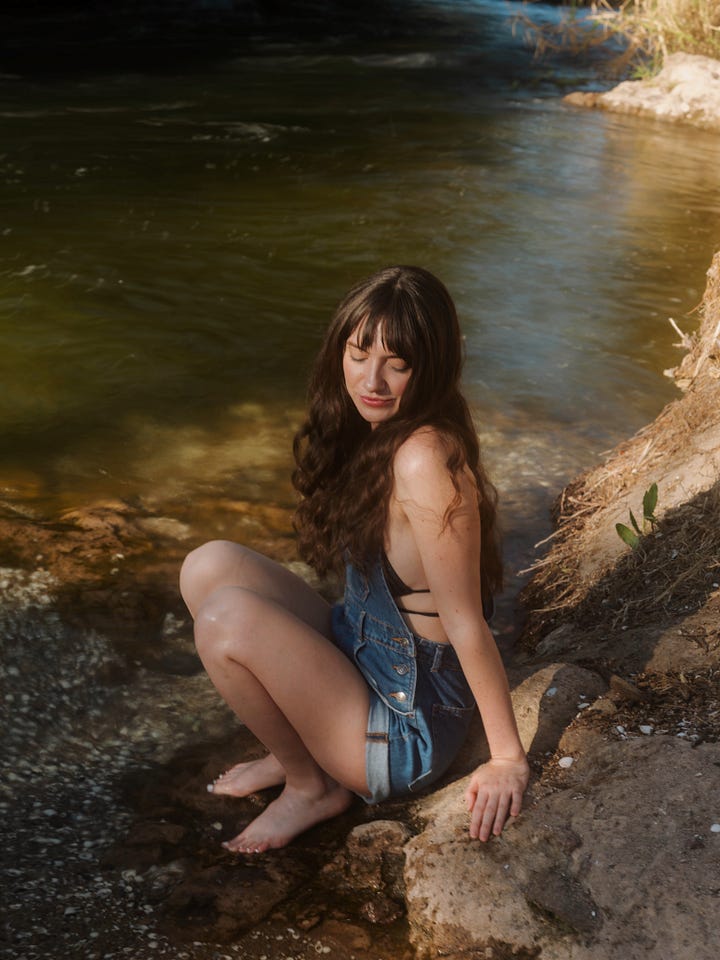
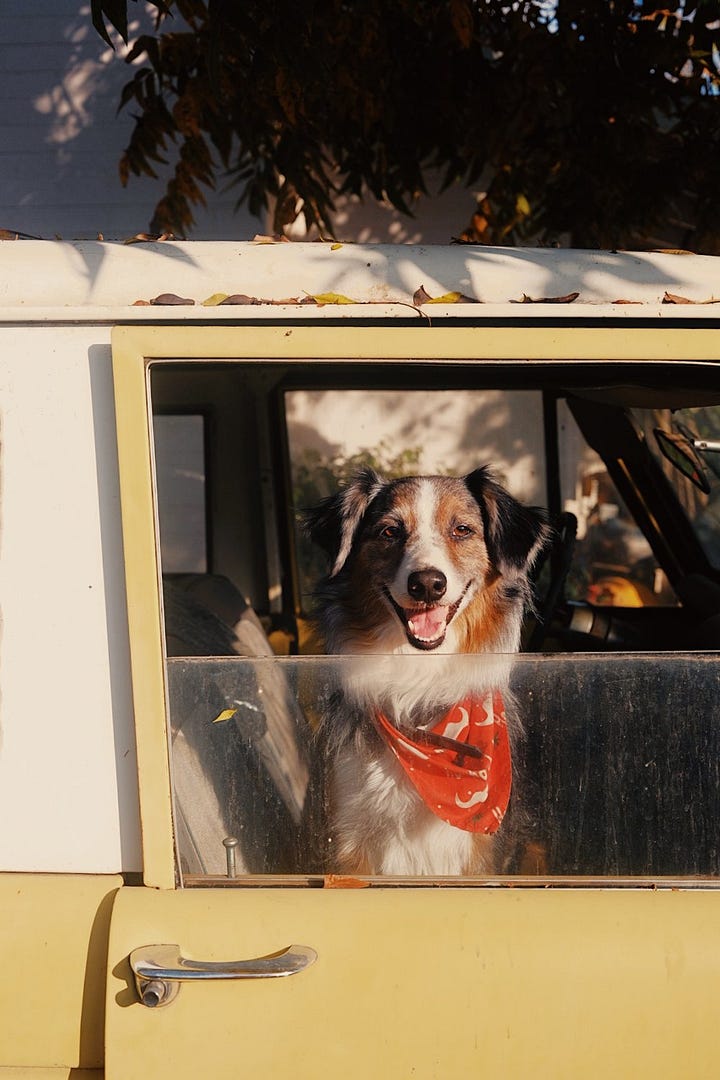

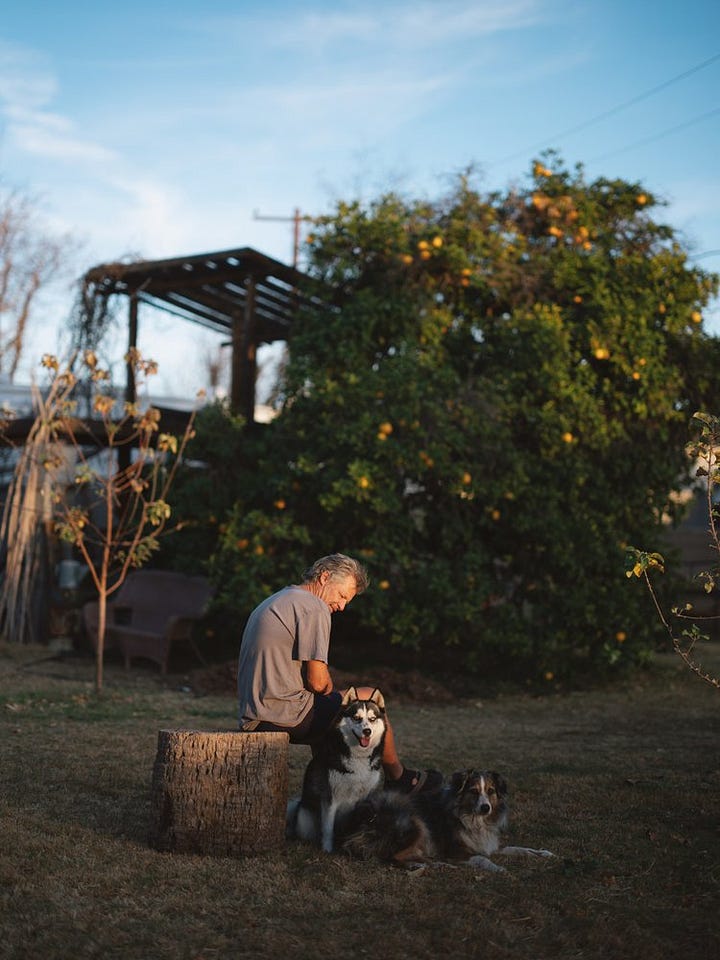
My Honest Take on Film Right Now...
Does seeing those trendy #35mm quick shots flooding Gen Z’s Insta feeds bug me, even just a little? Kind of. Save your cash! You don’t need that much film! That stuff doesn't grow on trees!
Then I remember we’re living in an age of AI quick-mixes, where recycled art gets microwaved into half-baked mock-ups and lobbed onto Facebook in under thirty seconds. Attention spans have shrunk, essay writing feels archaic, and critical thinking is on life support. In that context, the simple act of making something tangible, of slowing down and creating, becomes an act of resistance. Art is the revolution.
So, actually… I take it back. Please keep shooting your point-and-shoot 35mm. Better yet, forget the gear debate entirely and just make stuff. Use your hands! Experiment, mess up, try again tomorrow. Keep going. Just do.
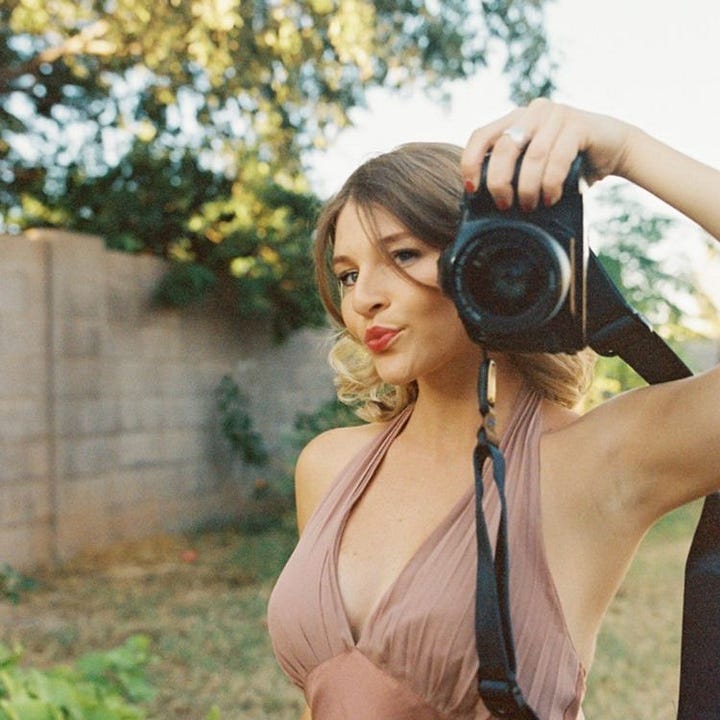
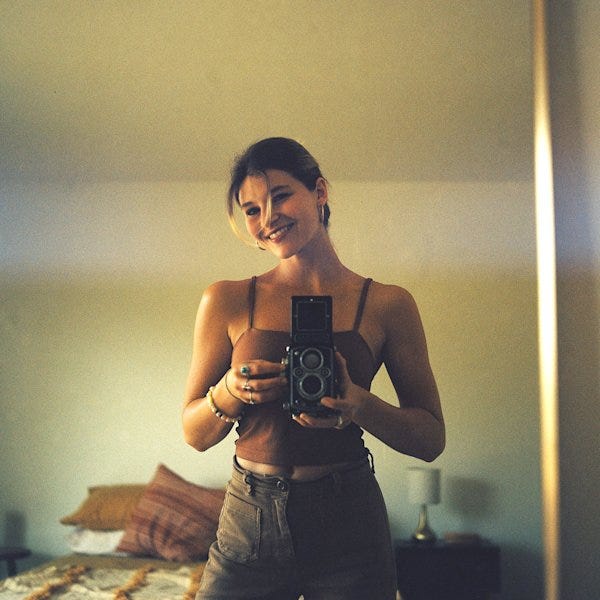
Is this my goodbye letter to film photography?
Absolutely not.
Film is in my blood at this point. I’ll shoot Kodak as long as I can lift a camera; I’m already hunting for a sweet deal on another medium-format Mamiya or Pentax before summer travels.
But honest reflection and a little self-critique are how I’ll grow in my 30s. I don’t want gear to carry my vision; I want skill, effort, storytelling, and heart to do the heavy lifting.
After 12 years of shooting for fun and for hire, I used to fear criticism, telling myself the work was just good enough. Truth is, if you want to level up in something you love, you’ve got to call your own bluff and fill the gaps you know are there.
"The truth is, I'm really in pursuit of greatness. I know people don't usually talk like that, but I want to be one of the greats. I'm inspired by the greats." - My boy, Timothee.





